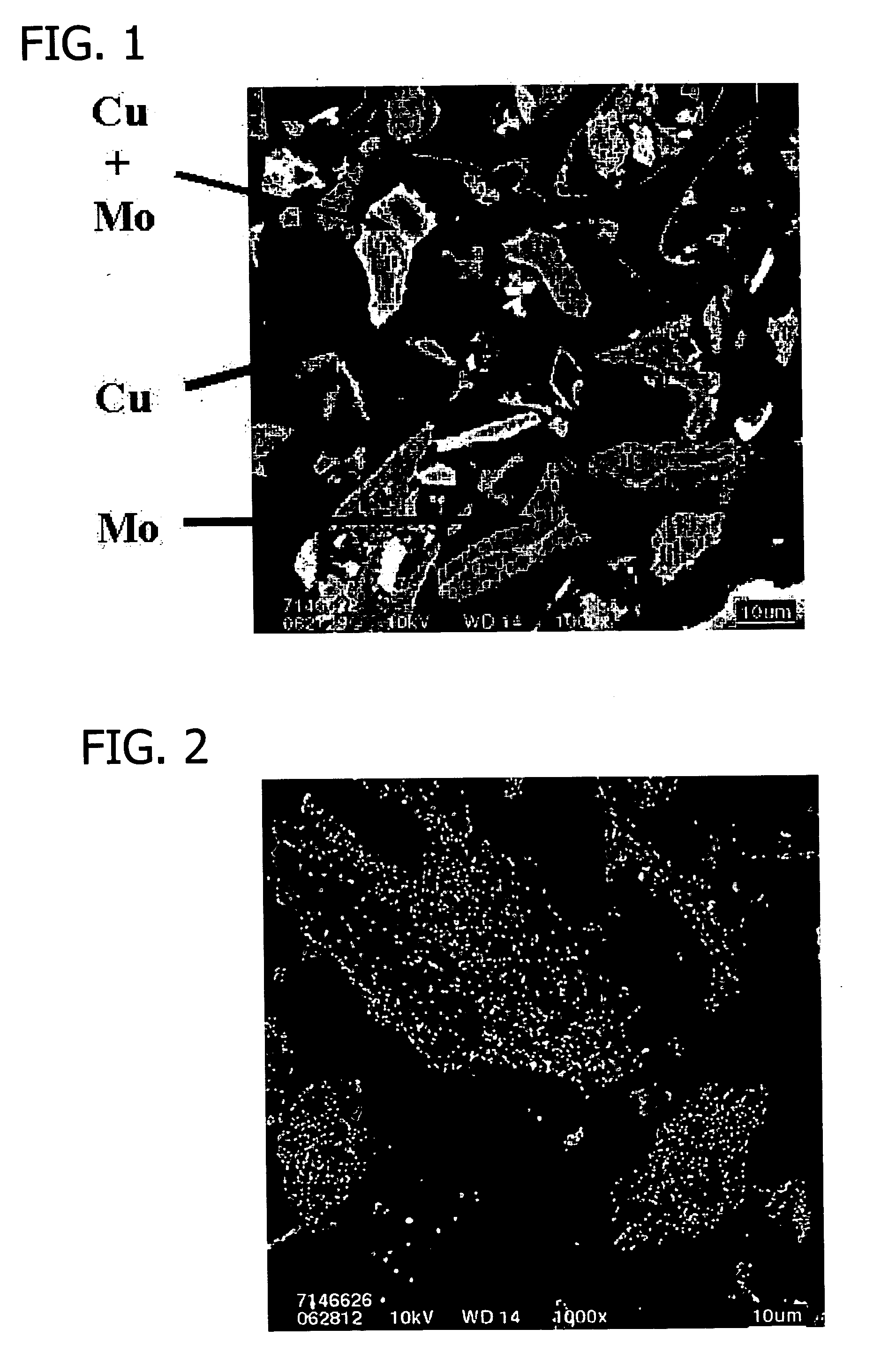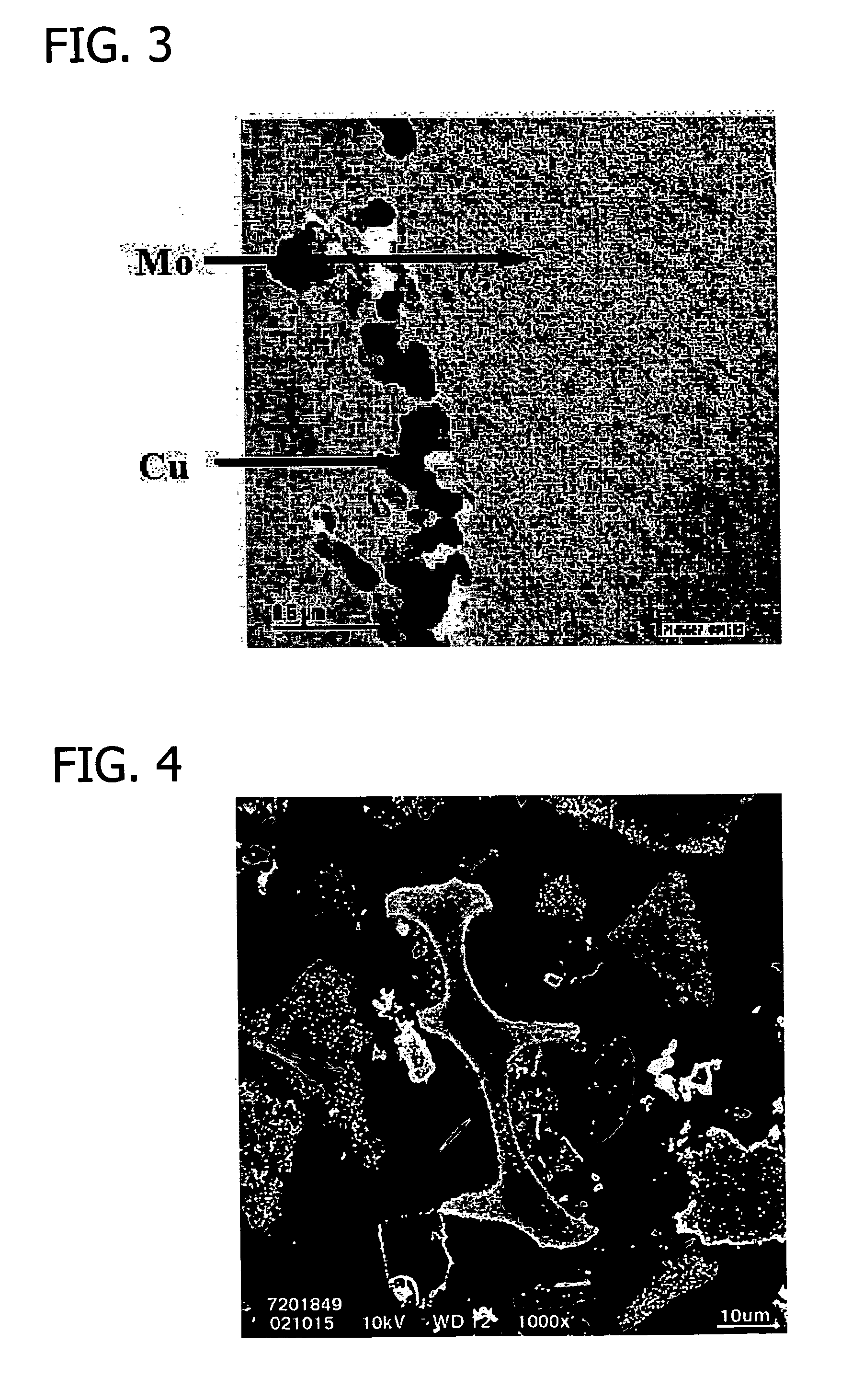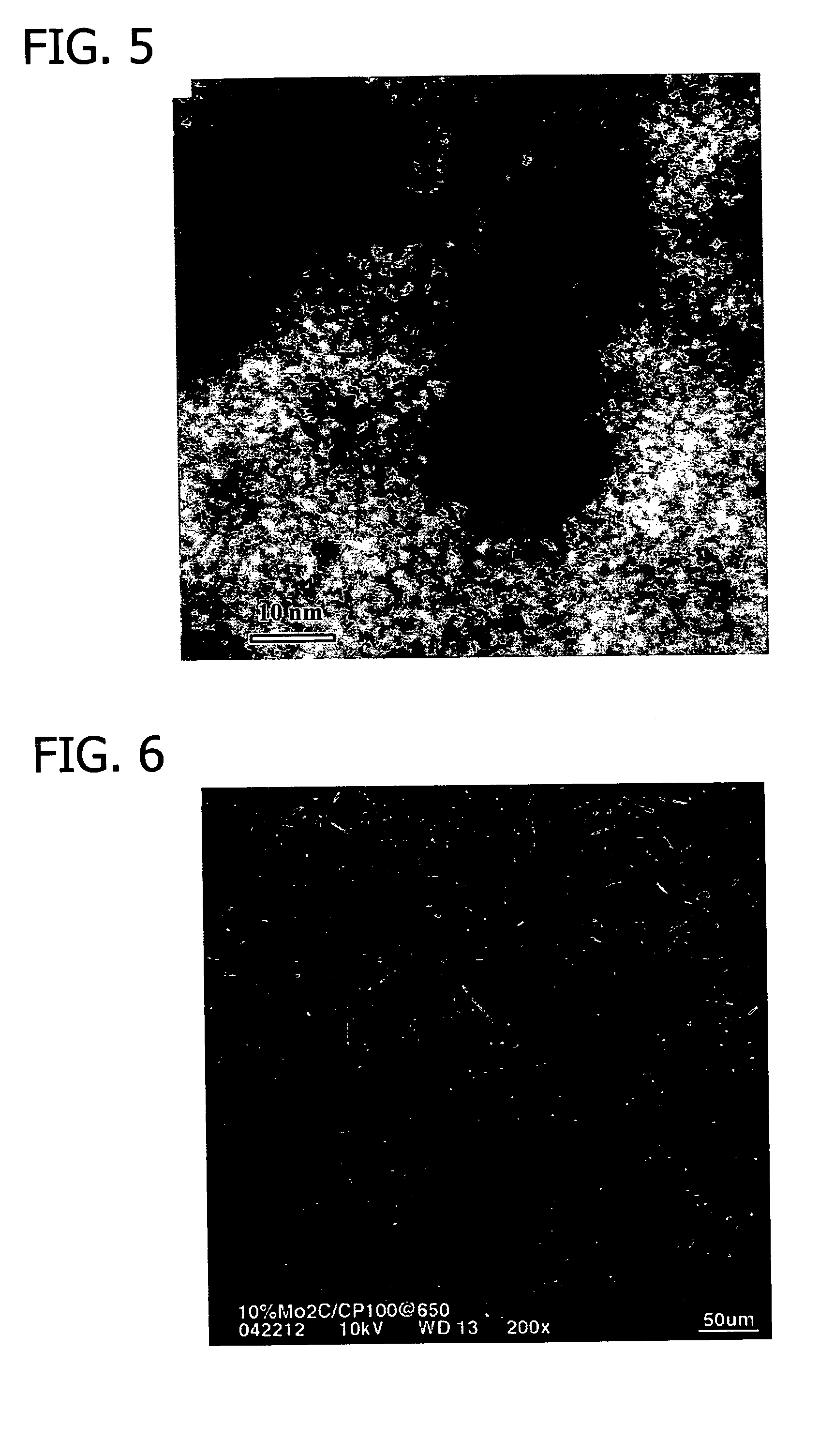Oxidation catalyst and process
a catalyst and catalyst technology, applied in the field of heterogeneous catalysis, can solve the problems of high loss of costly noble metals into the reaction solution, undesirable formaldehyde by-product, and undesirable formaldehyde by-product itsel
- Summary
- Abstract
- Description
- Claims
- Application Information
AI Technical Summary
Benefits of technology
Problems solved by technology
Method used
Image
Examples
example 1
Electroless Copper Plating on Bulk Metal Carbides and Nitrides
[0330] This example details electroless copper plating on bulk metal carbides and nitrides.
[0331] Bulk molybdenum carbide (20.0 g) (Aldrich Chemical Co., Milwaukee, Wis.) was added to a 2 l flask containing deionized water (200 ml) and a magnetic stirring bar to form a slurry.
[0332] A copper plating solution was prepared by adding reagent grade sodium potassium tartrate (NaKC4H4O6.4H2O) (29.99 g) (Aldrich Chemical Co., Milwaukee, Wis.), copper sulfate (CuSO4.5H2O) (11.79 g) (Aldrich Chemical Co., Milwaukee, Wis.), a 50 wt. % solution of sodium hydroxide (NaOH) (13.60 g) (Aldrich Chemical Co., Milwaukee, Wis.) and 37 wt. % formaldehyde (CH2O) (11.35 ml) (Aldrich Chemical Co., Milwaukee, Wis.) to deionized water (950 ml) to form approximately 1 liter of plating solution in a 2 liter flask.
[0333] Plating solution was added to the carbide slurry incrementally over the course of about 40 minutes with approximately 60 ml of...
example 2
Synthesis of a Precursor for Use in Preparing Carbon-Supported Molybdenum Carbides (Mo2C / C) and Carbon-Supported Molybdenum Nitrides (Mo2N / C)
[0336] This example details the preparation of a precursor for use in preparing carbon-supported molybdenum carbides and nitrides.
[0337] A carbon support (20.0 g) having a B.E.T. surface area of 1067 m2 / g (Degussa Corporation) was added to a 1 l beaker containing deionized water (300 ml) and a magnetic stirring bar to form a slurry.
[0338] A solution (60 ml) containing ammonium molybdate ((NH4)2MoO4) (4.236 g) (Aldrich Chemical Co., Milwaukee, Wis.) in deionized water was added to the carbon slurry using a MasterFlex® meter pump (MasterFlex® L / S®) manufactured by Cole-Parmer Instrument Company (Vernon Hills, Ill.). The slurry was agitated by a mechanical stirrer while the molybdenum solution was added to the carbon slurry at a rate of 2.0 ml / min over the course of about 30-40 minutes. During addition of the molybdenum solution to the carbon s...
example 3
Synthesis of Carbon-Supported Molybdenum Carbide Containing 15% by Weight Molybdenum Carbide (15% Mo2C / C)
[0341] This example details preparation of a carbon-supported molybdenum carbide using a carbon-supported molybdenum carbide precursor prepared in accordance with the procedure set forth above in Example 2.
[0342] The carbide precursor (8.0 g) was charged into a Hastelloy C tube reactor packed with high temperature insulation material which was purged with argon introduced to the reactor at 100 cm3 / min at about 20° C. for approximately 15 minutes. A thermocouple was inserted into the center of the reactor for charging of the precursor material.
[0343] The temperature of the reactor was then raised to about 300° C. over the course of 30 minutes during which time a 50% / 50% (v / v) mixture of methane and hydrogen (Airgas Co., St. Louis, Mo.) was introduced to the reactor at a rate of about 100 cm3 / min.
[0344] The temperature of the reactor was then increased to approximately 650° C. ...
PUM
| Property | Measurement | Unit |
|---|---|---|
| temperature | aaaaa | aaaaa |
| temperature | aaaaa | aaaaa |
| temperatures | aaaaa | aaaaa |
Abstract
Description
Claims
Application Information
 Login to View More
Login to View More - R&D
- Intellectual Property
- Life Sciences
- Materials
- Tech Scout
- Unparalleled Data Quality
- Higher Quality Content
- 60% Fewer Hallucinations
Browse by: Latest US Patents, China's latest patents, Technical Efficacy Thesaurus, Application Domain, Technology Topic, Popular Technical Reports.
© 2025 PatSnap. All rights reserved.Legal|Privacy policy|Modern Slavery Act Transparency Statement|Sitemap|About US| Contact US: help@patsnap.com



